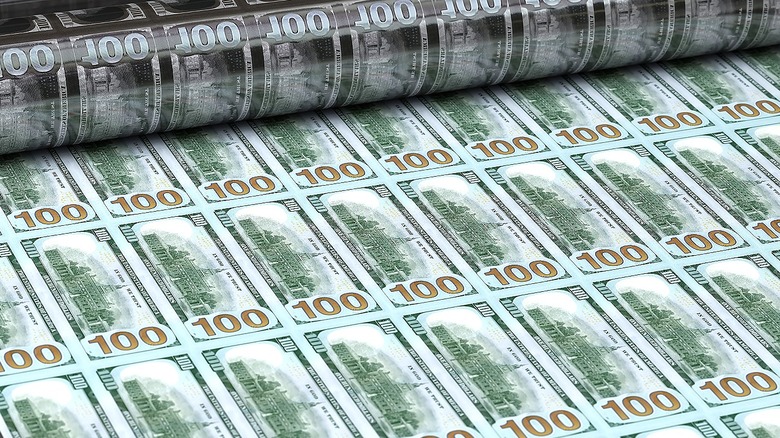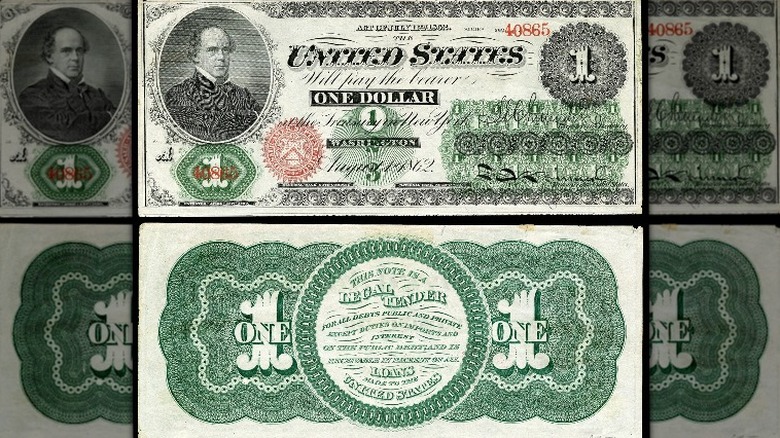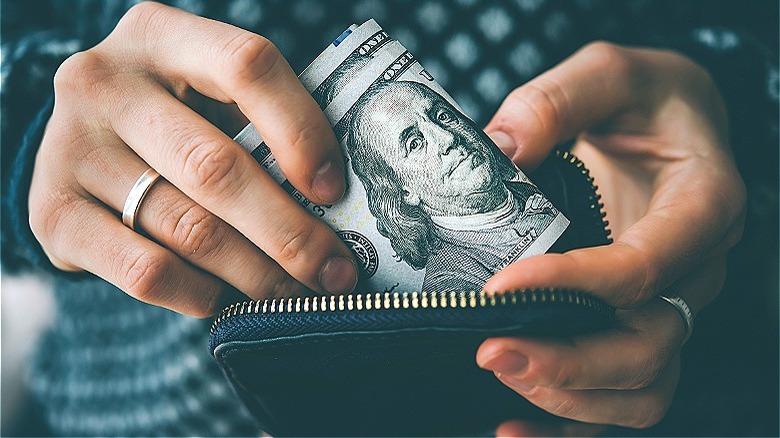The Real Reason US Money Is Green
Currencies from around the globe are frequently bright shades of red, blue, yellow, or even purple to differentiate the value of the notes. Yet the mighty United States dollar — the world's reserve currency — has maintained its same shade of green for more than 150 years. So, where did that tradition come from?
In 1861, the U.S. federal government found itself in need of funds to pay for fighting the Civil War. With limited taxing authority to raise money, it was decided to print paper currency instead. This was the first time paper currency had been printed by the federal government since the Revolutionary War of the prior century.
In between those two wars, state-chartered banks had started printing their own paper currency in a wide variety of designs and sizes. Understandably, federal officials wanted their currency to be more uniform and trustworthy than the ragtag collection of existing notes.
The new bills the government started circulating in the 1860s became known as greenbacks because, indeed, their backsides were printed with green ink. The primary reason for the green coloring was that cameras of that era could only produce black-and-white images, so the tinge of color would make the bills more difficult to counterfeit.
Green ink was invented in Canada
The origin of green ink has some interesting theories. Some historians say that green ink came from palm juice, while other folks assert early green ink had a more complex chemical composition and was actually invented in Canada by Dr. Thomas Sterry Hunt as an anti-counterfeiting measure. While the thought of money being dyed with palm tree sap is whimsical, the latter explanation is more credible.
According to the Bank of Canada Museum, Dr. Hunt (a professor at Laval University in Québec) invented green ink in 1857, after which it was patented on his behalf by George Matthews, a chemist with the Montreal City Bank. And though tests on the anti-counterfeiting ink proved it could indeed be removed (by boiling it in sulfuric acid, for one), the U.S. was still interested in its potential, eventually adopting the ink for its own bank notes in 1861.
At the time of the Civil War, the slang "greenback" actually had a negative association. Because the newly issued currency wasn't backed by gold, some recipients weren't willing to exchange the bills for full face value. Similarly, because so much currency was printed into existence in a short period of time, it created massive inflation. If you think that inflation is high nowadays, it was a whopping 25% in 1863 and 1864.
[Featured image by National Numismatic Collection,National Museum of American History via Wikimedia Commons | Cropped and scaled | Public domain]
US bills were given a makeover in 1929, but stayed green
In 1929, U.S. paper money took a huge leap toward the modern notes that we're all familiar with. Multiple physical sizes of notes got consolidated into a single smaller size to economize on printing costs and designs became more standardized.
Though this period would have been a logical time to drift away from the green hue, the U.S. Bureau of Engraving and Printing tells us that, "the use of green was continued because pigment of that color was readily available in large quantities, the color was relatively high in its resistance to chemical and physical changes, and green was psychologically identified with the strong and stable credit of the government."
At the end of 2022, there were an estimated 54.1 billion notes in circulation. And, according to the Federal Reserve, the cost to print these notes varies, with a $1 (and $2) bill costing about 3 cents to print while a $100 bill costs 9 cents (8.6 cents, to be exact).


